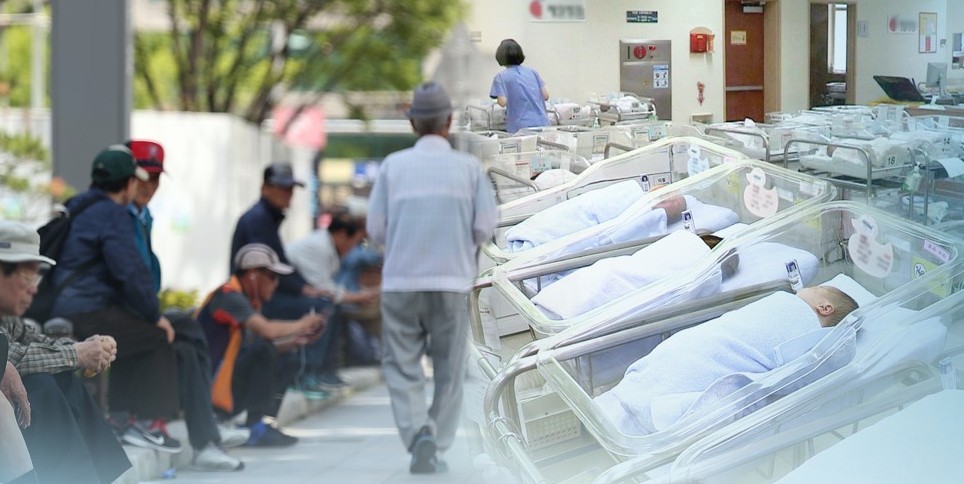Public pension payment to reach W60tr in 2022 amid rapid population aging
By Choi Jae-heePublished : Sept. 5, 2021 - 14:19

South Korea, one of the world‘s fastest aging societies, is facing a steep rise in its public pension payment, data showed Sunday.
Nearly 60 trillion won ($53.76 billion) will be taken out from the nation’s four public pension programs, including the national pension, government employees pension, military personnel pension, and private school teachers pension, in 2022, up 6.2 percent from this year’s 55.8 trillion won, according to data compiled by the Ministry of Economy and Finance.
In the wake of record-low fertility rates and the rapidly aging population, the Finance Ministry projected that the four pension funds’ expenditures will be on a sharp rise in the next few years. The figure is expected to reach 65.1 trillion won in 2023, 70.6 trillion won in 2024 and 75.3 trillion won in 2025, with an annual average increase of 7.8 percent over the four years.
Among the four pension schemes, the national pension’s payment next year is estimated at 30.9 trillion won, exceeding 30 trillion won for the first time. The government employees pension, private school pension and military pension will post 20.1 trillion won, 4.59 trillion won and 3.65 trillion won, respectively.
The rapidly aging population is the main driver of the envisioned steep increase in public pension spending.
While the average life expectancy increases, which boosts money withdrawal from the pension programs, fewer people will pay for the pension as the proportion of young people and middle-aged people decreases, industry sources said.
The country is widely expected to become a super-aged society in 2025, in which the proportion of those aged 65 and older will hit 20 percent of the total population. The country became an aged society in 2017, as the proportion of such people exceeded 14 percent.
In addition, the low rate environment pushes a growing number of people in middle age to receive their retirement pay in the form of pension credit, which is known as “individual retirement pension” program, whereby a retired employee can transfer a lump-sum retirement allowance to IRP account issued by commercial banks, to obtain deferrals on retirement income tax as well as to increase his or her actual received money.
Meanwhile, concerns are rising over pension deficits that aggravate the pension programs’ financial soundness.
For instance, the government employees pension is expected to see a deficit of worth 3.7 trillion won next year. It will rise to 5.2 trillion won in 2023, 6.1 trillion won in 2024, and 7.7 trillion won in 2025, data showed.
To prevent the pension funds from becoming insolvent, the government decided to put more taxpayers’ money. It will invest 8.71 trillion won in the major public pensions next year, up nearly 700 billion from this year’s 8.57 trillion won, which will increase to 9.27 trillion won in 2023, 10.438 trillion won in 2025 and 9.81 trillion won in 2024, according to the Finance Ministry.
Nearly 60 trillion won ($53.76 billion) will be taken out from the nation’s four public pension programs, including the national pension, government employees pension, military personnel pension, and private school teachers pension, in 2022, up 6.2 percent from this year’s 55.8 trillion won, according to data compiled by the Ministry of Economy and Finance.
In the wake of record-low fertility rates and the rapidly aging population, the Finance Ministry projected that the four pension funds’ expenditures will be on a sharp rise in the next few years. The figure is expected to reach 65.1 trillion won in 2023, 70.6 trillion won in 2024 and 75.3 trillion won in 2025, with an annual average increase of 7.8 percent over the four years.
Among the four pension schemes, the national pension’s payment next year is estimated at 30.9 trillion won, exceeding 30 trillion won for the first time. The government employees pension, private school pension and military pension will post 20.1 trillion won, 4.59 trillion won and 3.65 trillion won, respectively.
The rapidly aging population is the main driver of the envisioned steep increase in public pension spending.
While the average life expectancy increases, which boosts money withdrawal from the pension programs, fewer people will pay for the pension as the proportion of young people and middle-aged people decreases, industry sources said.
The country is widely expected to become a super-aged society in 2025, in which the proportion of those aged 65 and older will hit 20 percent of the total population. The country became an aged society in 2017, as the proportion of such people exceeded 14 percent.
In addition, the low rate environment pushes a growing number of people in middle age to receive their retirement pay in the form of pension credit, which is known as “individual retirement pension” program, whereby a retired employee can transfer a lump-sum retirement allowance to IRP account issued by commercial banks, to obtain deferrals on retirement income tax as well as to increase his or her actual received money.
Meanwhile, concerns are rising over pension deficits that aggravate the pension programs’ financial soundness.
For instance, the government employees pension is expected to see a deficit of worth 3.7 trillion won next year. It will rise to 5.2 trillion won in 2023, 6.1 trillion won in 2024, and 7.7 trillion won in 2025, data showed.
To prevent the pension funds from becoming insolvent, the government decided to put more taxpayers’ money. It will invest 8.71 trillion won in the major public pensions next year, up nearly 700 billion from this year’s 8.57 trillion won, which will increase to 9.27 trillion won in 2023, 10.438 trillion won in 2025 and 9.81 trillion won in 2024, according to the Finance Ministry.








![[Hello India] Hyundai Motor vows to boost 'clean mobility' in India](http://res.heraldm.com/phpwas/restmb_idxmake.php?idx=644&simg=/content/image/2024/04/25/20240425050672_0.jpg&u=)










